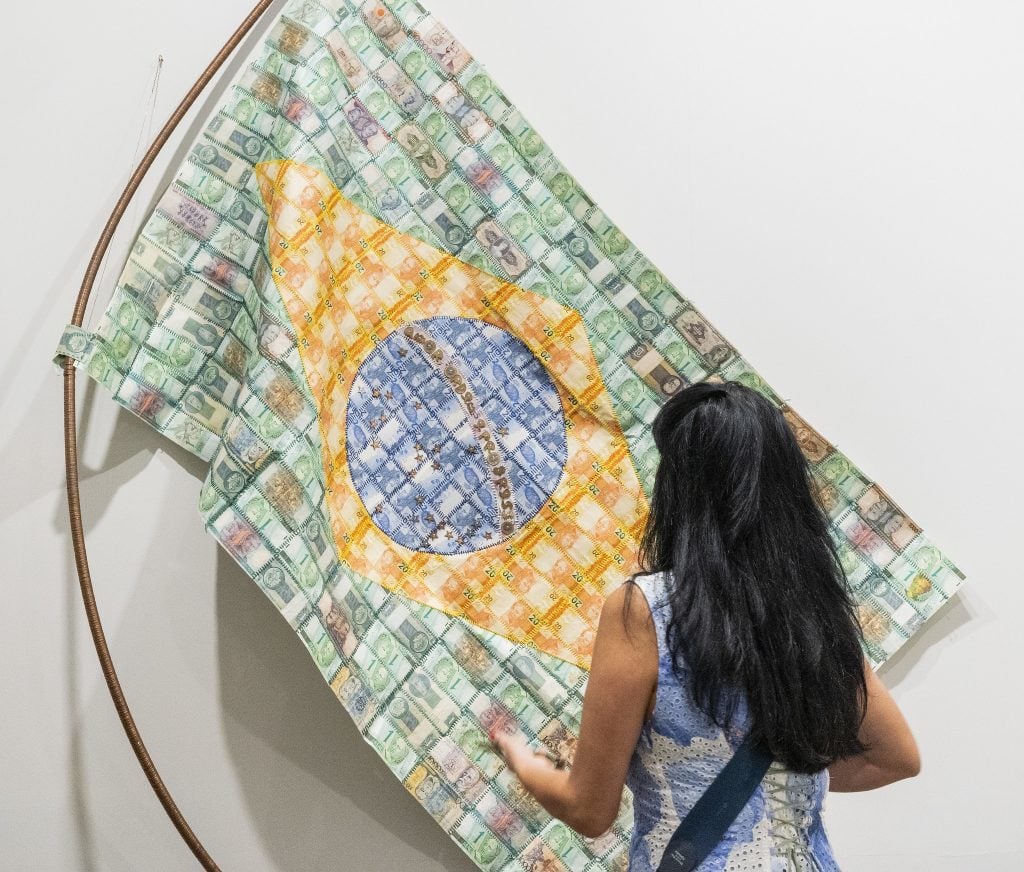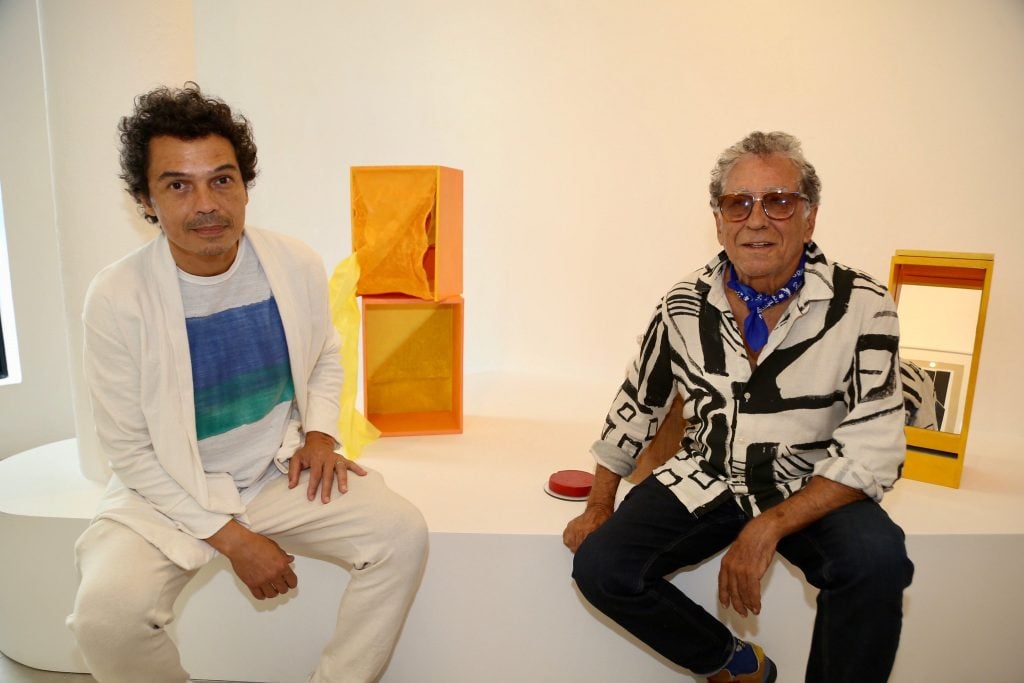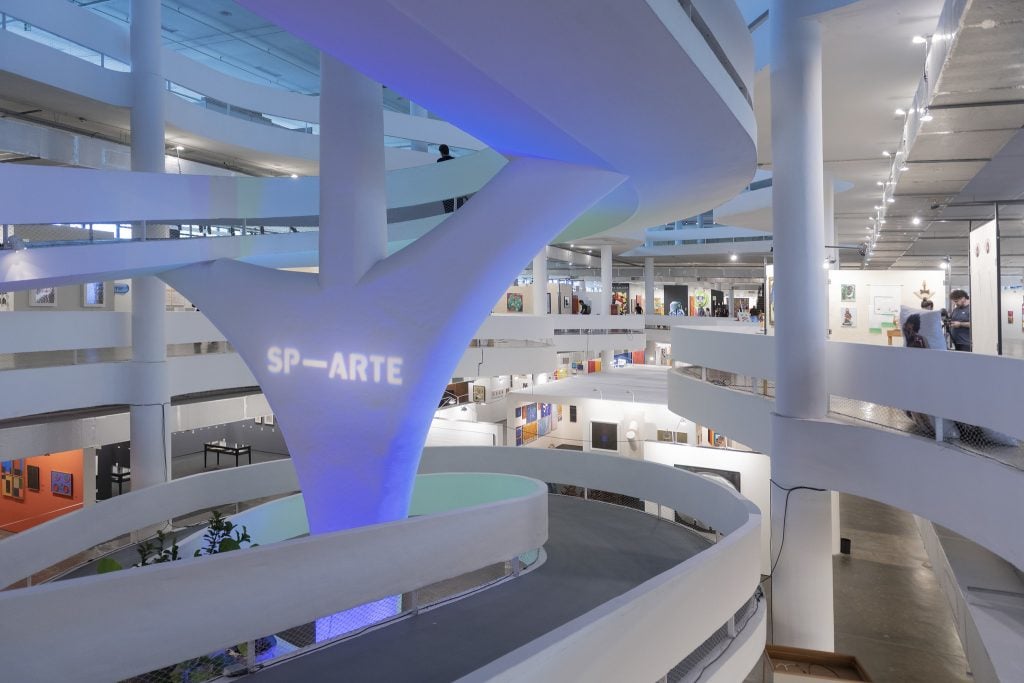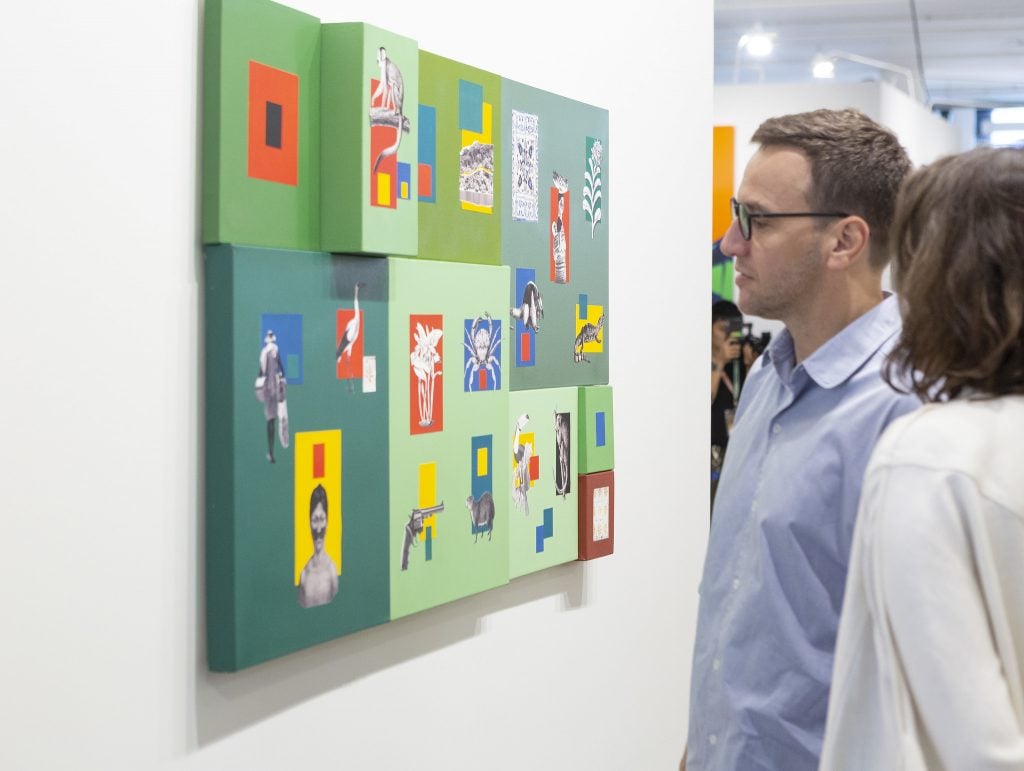Art Fairs
Sao Paulo’s Art Week Celebrated Brazil’s Multiplicity, Reflecting the New Government’s More Expansionist Vision of Culture
SP-Arte was more integrated than ever into the city outside its walls.

SP-Arte was more integrated than ever into the city outside its walls.

Ela Bittencourt

With its wealth of museums and cultural centers, and an ever-growing number of art galleries, São Paulo is a cultural mecca all year long, but most certainly during SP-Arte. The city’s art fair, founded in 2005, has quickly become Latin America’s largest art marketplace. Despite the recent exit of some international galleries and worries over rising energy prices, inflation, and the shakeup of American banks, this year’s event kept up the trend of post-pandemic renewal.
“The change to the new government that recognizes the importance of the ministry of culture [dissolved under the former right-wing president], is focused on issues of global relevance, such as human rights, on climate and environmental concerns, but also on the protection of peoples’ origins and of vulnerable populations, puts us back on the international stage,” SP-Arte’s director Fernada Feitosa said, commenting on the impact of the outcome of last year’s presidential election on the cultural sector.
Feitosa highlighted the greater inclusion of Brazilian Indigenous, Black, women and LGBTQ+ artists as one of the fair’s increasing strengths. So while perhaps less global, the event also felt more regionally inclusive and integrated within the city. Its new space, Casa SP-Arte, which occupies the rotund house designed in 1936-38 by the artist and architect Flávio de Carvalho, Casa SP-Arte—part of a larger housing complex, Vila Modernista—opened with a show of Hélio Oiticica, and will present exhibitions throughout the year.

César Oiticica Filho and Neville D’Almeida at the opening of Casa SP-Arte. Photo by Denise Andrade.
Jochen Volz, the art director of São Paulo’s oldest art museum Pinacoteca de Estado, which inaugurated a new building, Pina Contemporary, in March 2023, noted the fair’s growing importance for shaping the narratives presented in institutional collections. “Our acquisitions do not follow commercial trends, [but] we take advantage of the fair’s visibility to introduce our supporters to specific artworks that are truly relevant for the museum collection,” he said. “A museum like Pinacoteca constantly needs to actively and publicly revisit what stories of Brazilian art we are telling, and which histories have remained silenced for too long. The art market follows these canonic revisions.”
Collectors Fábio and Mônica Ulhoa Coelho, who first collected Brazilian art from the 1980s—a period when the market was centralized in São Paulo and Rio de Janeiro—are an example of national collectors who’ve embraced popular and Indigenous art. “Nothing’s more contemporary than Indigenous art,” said Fábio Ulhoa Coelho after attending the fair. “The developed countries cease to be the legitimation centers of an allegedly universal art. We live in interesting times of decolonization, of which Indigenous art is one of the most vivid expressions. To collect it means to live in our present time.” At SP-Arte, Indigenous artists, such as Denilson Baniwa, Jaider Esbell (1979-2021), and Daiara Tukano, who hail respectively from the Amazon’s Baniwa, Makuxi, and Tukano peoples, were represented by the established galleries A Gentil Carioca and Millan.

SP–Arte 2023. Crédito: divulgação SP–Arte 2023.
Meanwhile, among the galleries representing Black Brazilian artists, São Paulo’s prominent gallery Luisa Strina sold new figurative work by Panmela Castro (represented by the gallery since 2022), and Mendes Wood DM brought to the fair works by the late-career artist Sonia Gomes (who had her first solo show at Pace Gallery, New York, last year), and the artist and arts educator Antonio Obá.
Obá’s drawings around postcolonial themes and hauntingly delicate, mystical images of sacrificial suffering were simultaneously on view in the gallery’s warehouse in the Barra Funda neighborhood. Also in the area—markedly low-key and less gentrified than the city’s Jardins and Faria Lima regions—the collectively run Galleria de Artistas (Gda), held festive open studios, and a show by Raphael Escobar, and the gallery Fortes D’Aiola & Gabriel opened two shows, including one of the landscapes by the Antiguan artist and writer Frank Walter. Both shows—Escobar’s skillfully riffing across media on São Paulo’s Cracolândia, the district that concentrates the drug-dependent homeless, and Walter’s tinged with the anguish of diasporic passage—helped the aura around the fair feel less socially claustrophobic.
In the historical downtown where Cracolândia is located, the art nonprofit Pivô opened two shows. Janaina Wagner’s Baleia Fantasma referenced the representation of hunger in Brazil’s New Wave Cinema. Between Us: 10 Years of the Prize IMS/ZUM commemorated the prize awarded annually by the photography magazine, ZUM and by Moreira Salles Institute. In Pivô’s cavernous concrete space at the iconic Copan building, designed by Oscar Niemeyer and adjacent to boisterous rundown streets, visitors could admire works such as Eustáquio Neves’s haunting archival investigations into the early-20th-century eugenics and criminology, and Castiel Vitorino Brasileiro’s poignant diary of Black queer life, The Anatomy of Water.

SP–Arte 2023. Crédito: divulgação SP–Arte 2023.
After touring SP-Arte, GdA and Pivô, collector Thiago Tannous praised the curation of the fair, and its invocation of diverse contexts and works. “I also think that some young Brazilian artists deserve highlighting for their position returning to the fair—for example, Bruno Baptiselli, who last year showed as part of GdA [which he also co-founded] and who returns this year represented by Luisa Strina,” Tannous said. Tannous also found noteworthy SP-Arte’s initiative, Showcase, curated by Carollina Lauriano, which highlighted Panmela Castro, young LGBTQ Indigenous artists Uyra and Laryssa Machada, and others, alongside the consecrated artists Claudia Andujar, whose exhibition, “The Yanomami Struggle,” is on view at the Shed in New York, as well as Rosana Paulino and Emanuel Araújo
Returning to the Biennial building where SP-Arte takes place, part of the modernist complex at Ibirapuera Park designed by Niemeyer, which includes Afro Brazil Museum and MAC-USP, drove home the vitality of experiencing art first-hand. Amongst secondary-market stands, Gomide & Co elegantly paired geometries and pop with Brazilian folk art. Popular artists such as Chico da Silva—whose gorgeous retrospective is currently at Pinacoteca de Estado—Cícero Dias and Madalena Santos Reinbolt lent textural sensuality to Niemeyer’s austere curvilinearity.
Taking it all in, I couldn’t help but recall the title of the current exhibition, “Parábola do Progresso,” (“parábola” meaning both a “parabola” and a “parable” in Portuguese) at SESC Pompeia, a factory-cum-cultural space conceived by the Italian-born architect and curator Lina Bo Bardi who championed Brazilian arte popular. Similarly to Bo Bardi’s practice, the fair contained the seeds of a more expansionist vision of Brazil’s modernity and art as a winding parabola: a complex twine of Indigenous, Black-Transatlantic and European histories.